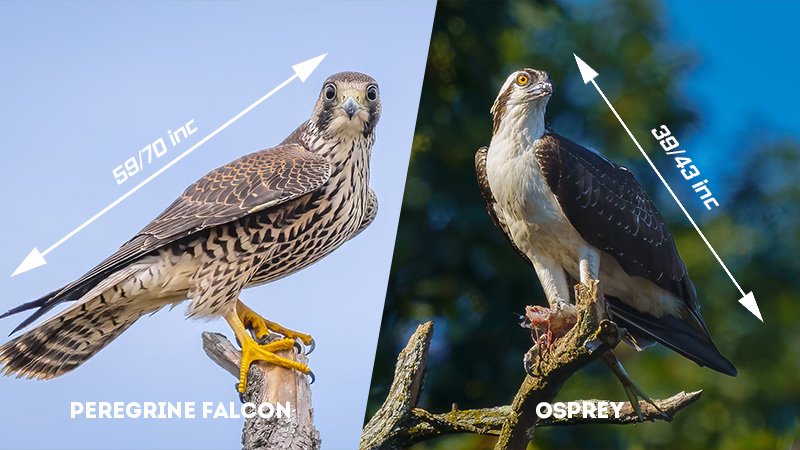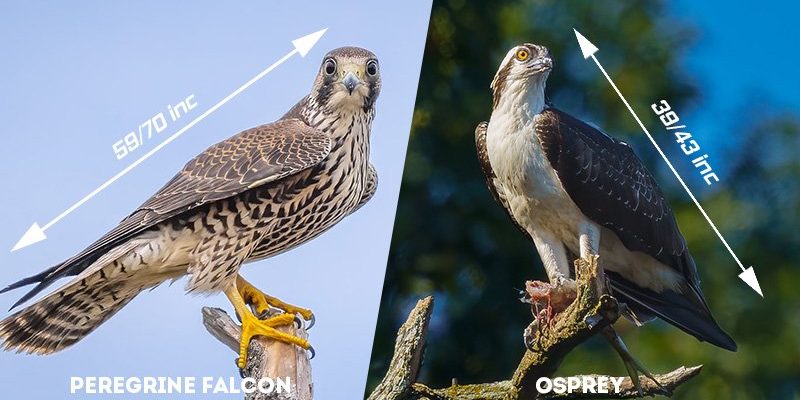
In this post, we’re going to explore the differences between the Peregrine Falcon and several similar bird species. You might be wondering what sets it apart from others like the American Kestrel or the Gyrfalcon. Don’t worry—I’ll break it all down for you in a way that’s easy to understand, just like chatting with a friend over coffee.
Overview of the Peregrine Falcon
The Peregrine Falcon is an extraordinary bird. Known scientifically as *Falco peregrinus*, it’s recognized for its striking blue-gray feathers and sharp facial markings. This bird of prey is found almost everywhere on Earth, except in extreme desert and polar environments.
One of its most remarkable features is its speed. In a stoop, which is a high-speed dive, the Peregrine Falcon can reach speeds of over 240 miles per hour! That makes it the fastest animal on the planet. Imagine being able to dive through the air faster than a race car on a straightaway. This incredible speed allows the Peregrine to catch its favorite meals—like pigeons and other birds—mid-flight.
Peregrines also have excellent eyesight, able to spot prey from miles away. With eyesight eight to ten times better than that of an average human, they can detect movement and even see UV light, which helps them spot prey better. These adaptations make the Peregrine Falcon a highly effective predator.
Comparing the American Kestrel
Now, let’s look at the American Kestrel, another fascinating bird. This little raptor is about the size of a sparrow, making it much smaller than the Peregrine Falcon. Kestrels are known for their vibrant plumage, especially the males, who have striking blue wings and a rusty-red back.
Despite their size, American Kestrels are skilled hunters. They often hunt insects, small mammals, and even small birds. What makes them unique is their ability to hover in the air, a skill that the much faster Peregrine doesn’t need. You can often see Kestrels hovering over a field, scanning the ground for their next meal.
While both birds are impressive hunters, their hunting methods differ. The Peregrine relies on speed and power, diving from great heights to catch prey. In contrast, the Kestrel uses a combination of patience and aerial maneuverability. They perch on wires or poles for long periods, waiting for the right moment to strike.
Spotting the Gyrfalcon
Another similar raptor is the Gyrfalcon, which is the largest of the falcon species. With its robust build and impressive wingspan, it’s easy to see how it commands respect in the bird world. Gyrfalcons come in different color morphs, ranging from white to dark gray, which helps them camouflage in various environments.
Though Gyrfalcons are larger than Peregrines, they share some similarities in their hunting styles. Both birds are known for their aerial speed and agility. However, Gyrfalcons tend to hunt larger prey, including seabirds and waterfowl, while Peregrines often target smaller birds.
Gyrfalcons are more commonly found in remote Arctic regions, while Peregrines are adaptable and can thrive in urban environments. This adaptability explains why you might spot Peregrines nesting on skyscrapers in big cities, while Gyrfalcons prefer rugged, isolated cliffs.
Personality Differences
Personality plays a role in how these birds interact with their environment. Peregrines are known for their boldness and aggression, especially during breeding season. They fiercely defend their territories from intruders and can be quite intimidating, despite their beauty.
On the other hand, Kestrels are usually more curious and less aggressive. You might find them exploring their surroundings or interacting with other birds in a less confrontational way. Their small size also means they often need to be more cautious, avoiding larger birds of prey.
The Gyrfalcon, being larger, carries a regal demeanor. They are powerful and confident, often seen soaring high above their territory. While they can be aggressive when hunting, they also have a laid-back side, choosing to rest and observe their surroundings for long periods.
Habitat Preferences
When it comes to habitat, these birds have their favorites. The Peregrine Falcon is incredibly adaptable. You’ll find them in diverse habitats, from coastal cliffs to city skyscrapers. This versatility is one reason their population has rebounded after near extinction due to pesticide use in the mid-20th century.
Kestrels, being smaller, typically favor open fields and grasslands. They thrive in areas where they can find plenty of insects and small mammals to hunt. You might spot them on fence posts or lightly wooded edges, scanning for a meal.
Gyrfalcons are more selective about their habitats. They prefer rugged, treeless areas with ample cliffs and ledges for nesting. This is why they’re often found in Arctic regions where they have the space to hunt and breed away from human activity. Each species has carved out its niche, showing incredible diversity in the bird kingdom.
Dietary Differences
While all three species are birds of prey, their diets differ significantly. The Peregrine Falcon primarily feeds on other birds, using its speed and aerial skills to catch them mid-flight. Their impressive hunting technique often leaves onlookers in awe as they dive from the sky with pinpoint accuracy.
The American Kestrel, in contrast, has a more varied diet. They enjoy a mix of insects, small mammals like voles, and occasionally small birds. This flexibility in diet allows Kestrels to thrive in different environments, making them a common sight in backyards and fields.
Gyrfalcons tend to go for larger prey, which includes ducks, geese, and sometimes even larger seabirds. Their hunting method usually involves a long chase over land or water, showcasing their powerful wings and endurance. Each bird’s diet clearly reflects its adaptations and hunting strategies in the wild.
Conservation Status and Efforts
The conservation status of these three birds varies, showing how different environmental factors can impact their populations. The Peregrine Falcon has seen a significant recovery since the banning of DDT in the 1970s, moving from endangered to least concern in many areas. Conservation efforts, like nesting programs and stricter regulations, have helped their numbers rebound.
Conversely, the American Kestrel has faced declines in some areas, often due to habitat loss and competition with invasive species. Conservationists are working to create more suitable habitats and reduce pesticide use to help boost their populations.
As for the Gyrfalcon, they are still considered stable, but their remote habitats mean they face challenges from climate change and human encroachment. Protecting their nesting areas is crucial for their continued survival, and ongoing research aims to monitor their populations effectively.
In the world of birds, understanding these species helps us appreciate their roles in the ecosystem and the importance of conservation.
Final Thoughts
So, what’s the takeaway here? The Peregrine Falcon is a speedy, adaptable predator that stands out from similar bird species like the American Kestrel and Gyrfalcon. Each bird has its unique traits, from hunting styles and habitats to personality quirks and dietary preferences.
By learning about these differences, we gain a deeper appreciation for nature and the incredible diversity of life around us. Whether you’re a birdwatcher or just a curious observer, the beauty of these raptors is something worth celebrating. So, next time you see a falcon soaring overhead, you might just recognize it as the amazing Peregrine or its fascinating relatives.

